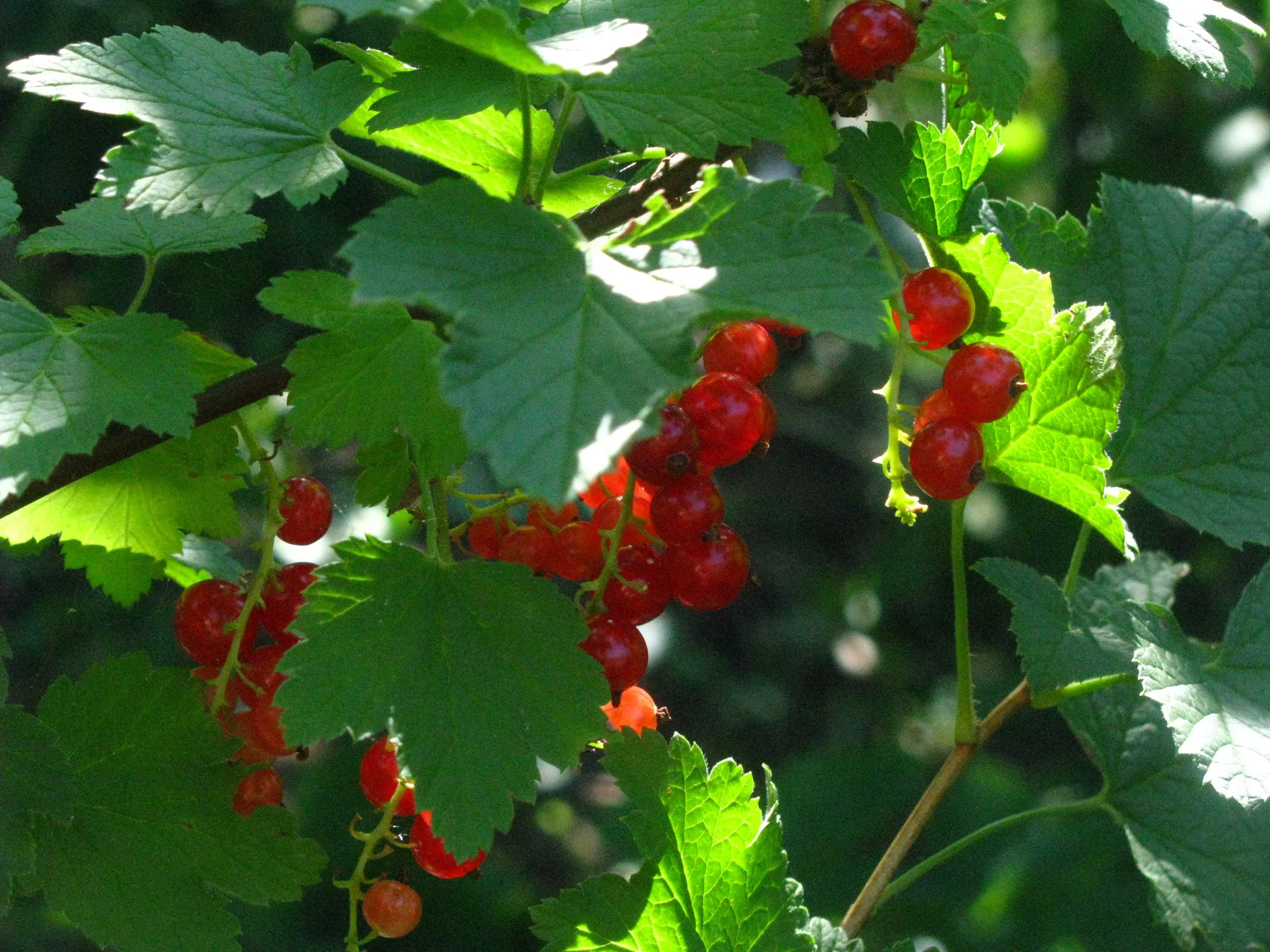Currant







Currant
Ribes spp.
Plant for the colors of ruby red and blue-black, for sweet and tart tastes, for the rich musky medicine, and for their arching understory spread!
Hardy from Zones 3-8. 3-6 feet tall and wide. Self-fertile.
Our Currants grow in rows along the edges of pathways, under the light shade of forest gardens, in rainwater gardens and riparian borders. Currant can take sunlight and shade as long as they have decently moist soil. The varieties we grow are native to dark and damp woodlands of Europe and Asia, so we’re learning from them how we can locally adapt to offer food and medicine.
Black Currants (Ribes nigrum) were first cultivated in Russian monastery gardens in the 11th century, and they were widely planted in Britain during WWII because they have higher concentrations of Vitamin C than Oranges! They’re also dense with calcium and iron, and their concentrations of anthocyanins, a flavonoid responsible for the purple hue, are higher than Blueberries and Blackberries. This nutritional antioxidant power improves gut and kidney health and aids with circulatory and immune systems. Extracts have also been shown to reduce risk for diabetes, and the seed oil assists with inflammation. Fresh and dried leaves make hearty infusions and teas with lots of preventative qualities: anti-inflammatory, antiseptic, antiviral, and antimicrobial.
Red Currant (Ribes rubrum) has a lot of similar qualities, including a potent amount of Vitamin C, assistance with digestive health, iron for red blood cell production, and seed oil that can be used for cooking or making soaps for skin health. Red Currant also contains Vitamin K, which is necessary for maintaining bone calcium. Like other red fruits, this Currant has lycopene, a carotenoid that helps prevent heart disease and cancer. Red Currant tea eases symptoms for rheumatism and gout and regulates menstrual cycles, and gargling the tea aids in washing out mouth infections. Sugar in Red Currant is slowly absorbed into the blood stream, so you get the sweet benefit without the crash or spike.
Red and Black Currants both flower and fruit about the same time with berries that hang off the branches. The names rubrum and nigrum appropriately refer to the color of their respective fruit. Red Currants shine in small crimson clusters with a slightly sweet taste, and Black Currants can be a little tarter and aromatic. In fact, one of the best ways to tell the two apart is rubbing the leaf and bark and taking a deep whiff: Black Currant has a wonderfully musky smell that distinguishes them.
We mix Currants with other fruits in jams, smoothies, fruit leather, or dry them for cold weather snacks. When dried they look a bit like raisins, which is actually where the name currant comes from: a hardened pronunciation of Black Corinth, which is a seedless grape variety mostly dried for raisins. We’ve never had Black Corinth juice, but Currant juice is extremely popular in Europe, and we love the fermented results, as additions to cider but especially Black Currant wine.
We can also learn a lot from how Indigenous tribes here have used the native Currant (Ribes triste), also called Swamp or Wild Redcurrant. The Inuit boil them into syrup and the Haudenosaunee and Ojibwe mash the fruit into small cakes to store or mix with cornbread. Blackfoot tribes have used the root to treat kidney diseases and discomfort from menstruation and menopause, while the Cree have used the fruit to help women get pregnant. The Upper Tanana in Alaska have used a stem decoction as a wash for sore eyes. Currant is an incredibly versatile plant, whether in Europe or North America!
We grow one Red cultivar and two Black cultivars.
Red Lake – widely-planted cultivar, bred in the 1930s at the Minnesota Fruit Breeding Farm. Cold-hardy, beautiful as hedge, with bright berries abundantly ripening in July.
Consort – Black Currant cultivar, a Canadian-bred cross between European and Asian varieties for immunity to White Pine Blister Rust. Grows just fine in the shade, fruiting delicious clusters in July.
Titania – one of the most popular Black Currants available, bred in 1969 by Pal Tamas in Sweden as a cross between Consort and two Russian varieties. Lovely flavor, frost and disease resistant (including White Pine Blister Rust and mildew), and heavy yield ripening at the same. Partially self-fertile, so would pair well with Consort.
We grow our Red and Black Currants from cuttings and stool layering. We usually plant our Red Currants in a little more sun and our Black Currants with a little more shade.
Note: Some states prohibit sales of Black Currant, as they host White Pine Blister Rust. We grow rust resistant varieties, but we can’t sell Black Currant in Massachusetts, Maine, New Hampshire, or here in Virginia.